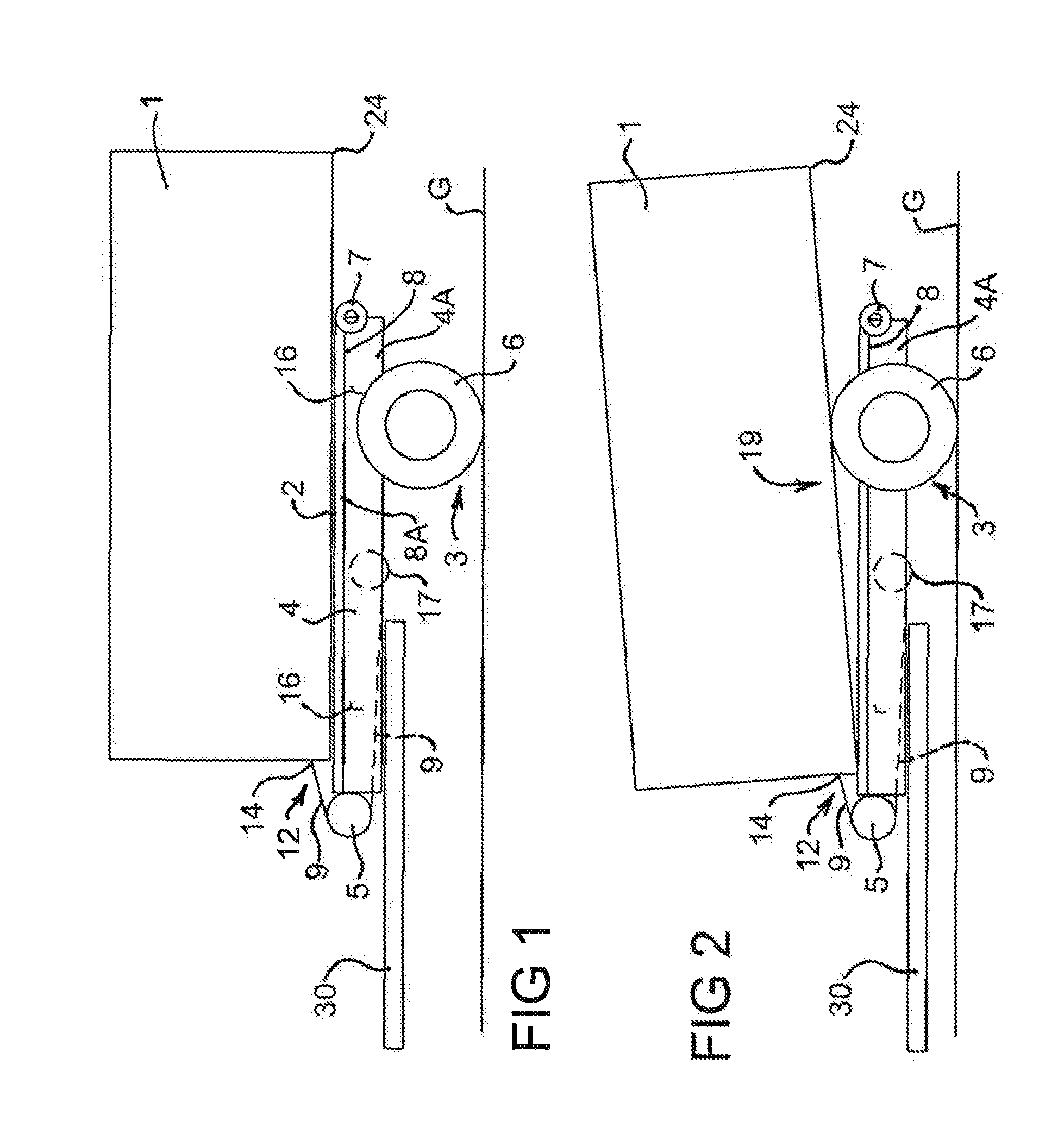Loading and Unloading Arrangement for a Vehicle
a technology for loading and unloading a vehicle and a support member, which is applied in the direction of loading transportation vehicles, transportation items, vehicles with parallel load movement, etc., can solve the problems of not being able to easily unload a tray located on the support member to ground level and leave this tray behind, and not being able to vertically drop a transport load from a support member
- Summary
- Abstract
- Description
- Claims
- Application Information
AI Technical Summary
Benefits of technology
Problems solved by technology
Method used
Image
Examples
Embodiment Construction
[0047]FIGS. 1 to 6 provide a sequential series of figures illustrating the steps in unloading and loading a vehicle, in this case a trailer 4, that includes one preferred embodiment of a loading and unloading arrangement according to the present invention. As can be appreciated, unloading a transport load, in this case in the form of a container 1, from the trailer 4 is illustrated by following the sequence of figures starting from FIG. 1 through to FIG. 6. Conversely, loading the container 1 onto the trailer 4 is illustrated by following the figures in reverse order starting from FIG. 6 through to FIG. 1.
[0048]While the transport load is shown in the form of a container 1 in the present figures, the transport load could be any suitable object such as a tray, container, box, platform or the like. Similarly, it should be understood that while the vehicle 4 is shown in the form of a trailer 4 in the present figures, the vehicle could be any suitable wheeled body such as for example a ...
PUM
 Login to View More
Login to View More Abstract
Description
Claims
Application Information
 Login to View More
Login to View More - R&D
- Intellectual Property
- Life Sciences
- Materials
- Tech Scout
- Unparalleled Data Quality
- Higher Quality Content
- 60% Fewer Hallucinations
Browse by: Latest US Patents, China's latest patents, Technical Efficacy Thesaurus, Application Domain, Technology Topic, Popular Technical Reports.
© 2025 PatSnap. All rights reserved.Legal|Privacy policy|Modern Slavery Act Transparency Statement|Sitemap|About US| Contact US: help@patsnap.com



